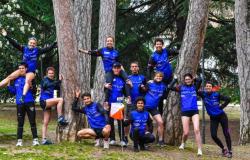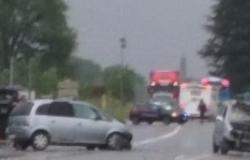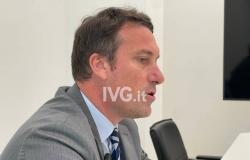Bologna, 27 April 2024 – Rain, flooding, floods, landslides: between 1 and 3 May and between 16 and 18 May 2023 Emilia-Romagna was hit with a unprecedented violence. L’flood And it devastated 91 municipalities: the provinces of Bologna, Ravenna, Forlì-Cesena and Rimini are on their knees. Modena, Reggio Emilia and parts of Marche and Tuscany were also affected.
Top from left, clockwise: Silvia Dal Santerno, Silvia Campana, Giuliana Bordini and Isabella Salvini, flood victims and among the protagonists of the documentary
They have been registered rainfall peaks even exceeding 600 mm in just 48 hours: 23 waterways flooded for a volume of 350 million cubic metres. Initially there were already more than 36 thousand displaced people, the estimated damage reaches 10 billion. Thousands of landslides and 500 roads closed. 17 people died: many were elderly people who lived alone, some wanted to save their belongings or animals.
Silvia was on a roof for hours. The water had reached a height of six meters in Faenza: some ecological guards on a dinghy they saved hertogether with his cats, after having heard the sound of the vuvuzela found by chance in the attic and having seen, on a blacker than dark night, the fluorescent yellow of his hat.
Juliana she survived the most atrocious of pains: her husband Giovanni he was sleeping downstairs and he has water swallowed within seconds. In Sant’Agata sul Santerno not even the cemetery had been spared from the fury of the water: “Sometimes I say to myself – she confesses with a strangled voice – ‘it would have been better if I had died too’. I saw hell“.
Isabella lost her home and was hosted for a year at the Cavallino hotel. In that hotel, on the Via Emilia towards Forlì, however, she even got married: “It wasn’t the dream wedding, but maybe it was even better.”
Silvia and Gianni, in the Apennines in Dovadola, manage the ‘Il Casetto’ tavern: the mountain crumbledthe mud also entered the electrical sockets, but now they have risen again.
These are just some of the protagonists of the documentary and podcast ‘I saw all hell – The story of the flood‘ That National newspaper – il Resto del Carlino he has prepared one year after the tragedy. Faces and stories, voices and memories, exclusive interviews and unpublished images that you can listen to and see on our sites and platforms. A way not to forget, of course. But also to keep attention high on a national disaster.
The podcast will be released for six Fridays in a row starting from May 3rd and you can find it, as well as on our website (www.quotidiano.net, www.ilrestodelcarlino.it where there will be a channel dedicated to the special flood) on all platforms, Spotify, Google and Apple podcast. The documentarylasting one hour, will be available on our sites from May 17thbut it will be there a preview open to readers (with entry methods that we will indicate to you in the next few days) and to the institutions.
The appointment is for on May 16th at 6pm in Bologna at the renovated Modernissimo cinema: there will then be others free screenings in Romagna in all the cities affected by the flood, thanks to the support of the Bcc of Ravenna, Forlì and Imola. He will start from Ravenna, then Imola, Faenza, Lugo, Forlì and Cesena: for a year we followed families and survivorsfrom the small Bolognese town of Selva Malvezzi to the Montepaolo Hermitage, in the Forlì area strangled by landslides.

The poster of our documentary ‘I saw all hell – The story of the flood’
The image chosen for the poster, by our photographer Stefano Tedioliwent around the world: a carabiniere carries an elderly man on his shoulders in a sea of water, in a desperate race under the astonished eyes of other soldiers and passers-by. All three (the reporter, the policeman and the rescued man) tell what happened in those hectic hours in the documentary and in the podcast. ‘I saw hell’ tells above all about survival, hope, the face of those who made it. Without controversy, but with the strength of life. Yet with very high sacrifices.
The post-flood has so far been the subject of one of the bitterest political battles in recent years, with cross accusations between Rome and local administrations. What is certain is that very few citizens have seen the refundsafter removing the initial contributions and despite the substantial compensation funds provided by the Government: first the platform for requesting contributions was not operational, then the bureaucratic difficulties and with the tax credit, and again the chaos of unreimbursed movable property.
Until today, when they are the first checks arrivedas the reconstruction commissioner explains Francesco Figliuolo: “I have already signed up for some reimbursements for private individuals and I am really happy. There is Cesena, there is Faenza, there are other towns. It means that the machine is oiled, it works, the funds are there and we continue to provide. We have 630 million, at the moment a little eroded because I have started to repay. I can say that I repaid 50% of what was recognized, then with the new ordinance we will get directly to 100%”.






